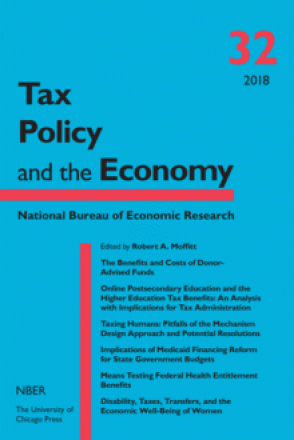Disability, Taxes, Transfers, and the Economic Well-Being of Women

You may be able to download this chapter for free via the Document Object Identifier.
We study the economic situation of disabled women and the role that taxes and transfers play in improving their economic circumstances, using 1968-2015 data from the Panel Study of Income Dynamics. We begin by documenting the trends in point-in-time disability rates of women as well as estimating the prevalence of disability over a woman’s lifetime. We find that women are more likely than men to have experienced a disability through their mid-40s, but are less likely to have experienced a serious disability prior to retirement. The onset of disability for women is found to be associated with a fall in labor supply, family income, and consumption. The fall varies with the degree of disability but tends to be smaller than that of disabled men, particularly for family income and consumption. Transfers, particularly Disability Insurance and Supplemental Security Income play a large role in cushioning the fall in income for disabled women. However, while the relative decline in income is smaller for women than men, a larger share of disabled women have very low absolute levels of income and consumption. Approximately half of the most disabled women receive food stamp/SNAP benefits, pointing to the greater relative importance of means-tested benefits rather than social insurance for this group.
-
-
Copy CitationBruce D. Meyer and Wallace K. C. Mok, Tax Policy and the Economy, Volume 32 (University of Chicago Press, 2017), chap. 6, https://www.nber.org/books-and-chapters/tax-policy-and-economy-volume-32/disability-taxes-transfers-and-economic-well-being-women.Download Citation


